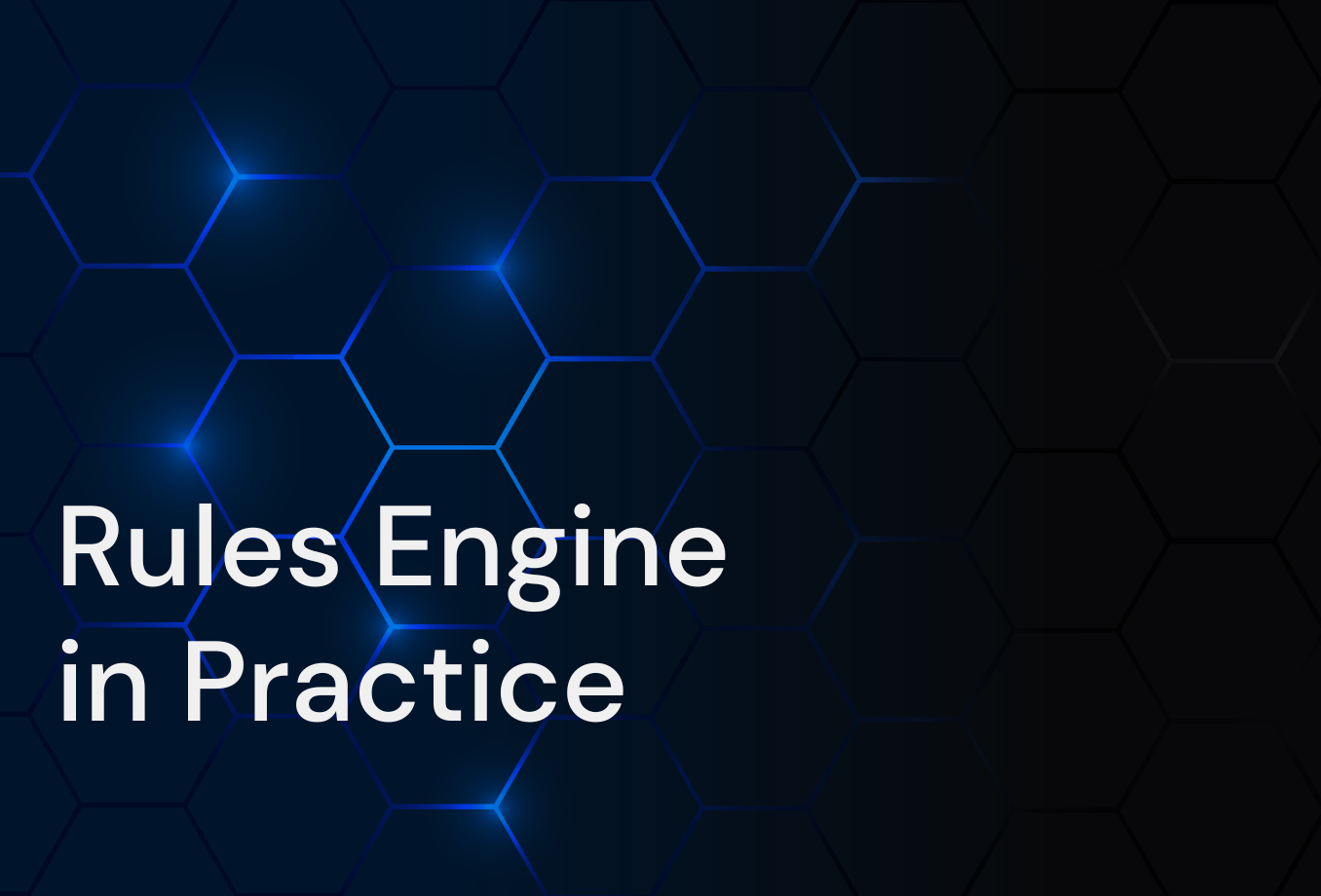Think about this: a customer files an insurance claim on Monday. They receive their payment by lunchtime the same day. Does that sound impossible? It's not anymore. Business rules engine technology, working with artificial intelligence, makes a "decision in minutes" the new standard for insurance companies around the world.
For a long time, the insurance industry seemed stuck. Other fields adopted digital tools. Insurers often wrestled with paper claims forms, manual data entry, and claims processing workflows that took weeks. Claims processing was slow. This frustrated insurance customers. It also increased operational costs. But things are changing quickly.
Smart insurers now see that business rules engines paired with machine learning create a strong process automation platform. This combination does more than just speed up insurance processes. It changes the entire customer experience. It also cuts costs and improves accuracy.
Insurance companies now process insurance claims in near real-time. Some achieve 90% automation rates in their claims processing. The results are clear. Customer satisfaction scores are rising. Operational efficiency is better. Fraud detection capabilities are stronger than ever.
Why is old-style claims processing failing customers?
Let's be direct about what's wrong with traditional insurance operations. Claims processing workflows built on old existing systems cause big problems. These problems affect everyone.
Manual Claims Processing: Still Too Slow and Costly
For too long, insurance companies have been wrestling with manual claims processing. It's a system that, frankly, is creaking under the strain. Think about it: your teams are buried under mountains of paperwork, spending countless hours on manual data entry, trying to make sense of everything from claims forms to medical reports.
These old claims processing workflows, often running on legacy existing systems, just can't keep up. We're talking about insurance claims data scattered everywhere, making it a nightmare to get a clear picture.
And the average claims processing time? It’s still painfully slow. This manual slog isn't just about time; it's about the risk of human error creeping into decision making processes. Every insurer knows that customer expectations are sky-high – people want quick answers, especially when they’re dealing with a stressful claim. But how can you deliver that when your insurance processes are stuck in the past? It’s a constant battle, especially during peak periods when the volume of claims shoots up.
The bottom line? Manual claims processing is a drain on resources, a source of errors, and a major roadblock to keeping your insurance customers happy.
The New Standard: Document AI + Business Rules Engine
So, what's the answer? It's a powerful duo: Document AI and a business rules engine. This combination is rapidly becoming the new gold standard for insurance operations, turning that document chaos into streamlined clarity.
Here’s how it works, and it’s pretty smart. First, Document AI gets to work on all those incoming claims forms and supporting documents. This AI isn't fussy about the format; it uses things like natural language processing and optical character recognition (OCR) to automatically read and understand everything. It pulls out the key claims data – claimant details, incident specifics, type of damage, dates, locations, you name it. What's really clever is that the AI then organizes this information into a structured format and even gives it a confidence score, indicating how certain it is about the accuracy of the extracted data.
This structured, scored data is then fed directly into the business rules engine (like Dezerto's Hickson claims engine). This is where the decision making magic happens. The rules engine is loaded with your company's specific business rules and business logic. It takes the information from the AI and automatically executes the predefined rules for that claim. [1] Because the business logic is separate from your core application code, it’s incredibly flexible. Your business users, the people who really understand claims, can update these business rules quickly without needing a major IT project. This means you can adapt on the fly to new regulatory compliance demands or shifting market demands.
This isn't just about speeding up one part of the process. It’s about creating an intelligent, automated flow from the moment a document hits your system to a decision being made, often in minutes.
Key Benefits for Claims and Operations Teams
Bringing Document AI and a business rules engine into your claims processing isn't just a tech upgrade; it's a game-changer for your teams and your entire operation. The benefits are clear and they are significant.

Operational efficiency
First off, operational efficiency goes through the roof. Think about all those hours your team currently spends on manual data entry and sifting through documents. Automation handles a huge chunk of that. As seen in practice, this can reduce manual data entry by as much as 70%. This frees up your skilled claims professionals to focus on what they do best: handling complex cases, making nuanced judgments, and providing that essential human touch where it's needed most.
Time needed
We're talking about slashing claims processing times from weeks or days down to minutes for many straightforward insurance claims. This isn't just about internal efficiency; it has a massive impact on customer satisfaction. When insurance customers get their claims resolution quickly and smoothly, especially during a stressful time, their loyalty skyrockets. Some insurers have seen Net Promoter Scores jump by 9% after implementing this kind of automation.
Improved accuracy
Accuracy gets a major boost too. AI minimizes human error in data extraction, and the rules engine ensures that business rules are applied consistently every single time. This means fewer mistakes, more accurate claims assessment, and fairer outcomes for your customers. This consistency is also vital for regulatory compliance, helping you navigate that complex web of rules with greater confidence.
Fraud detection
And let's not forget fraud detection. Machine learning algorithms, often part of the AI component, are incredibly good at spotting claims patterns and anomalies that might indicate potentially fraudulent claims. This enhanced fraud detection can significantly reduce losses from fraudulent claims – some estimates suggest AI can cut these losses by 15-25%. The rules engine can then automatically flag these suspicious insurance claims for review.
Improved profit
The financial benefits are compelling. By reducing manual effort, speeding up processes, improving accuracy, and cutting down on fraud, insurance companies are seeing significant cost savings. Some reports indicate processing cost reductions of up to 40%, and an overall ROI from automation in claims processing that can be as high as 10x.
Leveraging historical data for smarter risk management
Leveraging historical data transforms how you approach risk management and strategic planning. Predictive analytics built into Document AI and business rules engine systems analyze years of claims data to predict future outcomes with remarkable accuracy. This intelligence helps you spot emerging trends before they become costly problems.
Historical data analysis reveals patterns across different insurance types. In health insurance, you can identify which medical conditions correlate with higher claim frequencies. Auto insurance data shows seasonal accident patterns and high-risk driver behaviors. Life insurance applications benefit from mortality trend analysis that improves underwriting accuracy.
The centralized rule repository stores not just current pre defined rules but also learns from past decisions. When similar claims arrive, the system references historical data to predict future outcomes and adjust risk assessment strategies accordingly. This approach streamlines business processes while reducing unexpected losses.
Enhancing customer satisfaction through personalized automation
Automating customer interactions addresses changing customer expectations for immediate, personalized service. Modern insurance customers expect responses within hours, not days, especially when dealing with stressful claim situations across health insurance, auto insurance, and life insurance applications.
Personalized rules within the centralized rule repository enable customized experiences for different customer segments. High-value clients might receive expedited processing, while first-time claimants get additional guidance and support. These personalized rules work alongside pre defined rules to balance efficiency with individual attention.
Automating customer interactions through intelligent chatbots and automated status updates keeps people informed throughout the claims process. The system sends personalized messages based on claim type and customer preferences. This transparency builds trust while reducing the volume of status inquiry calls to your customer service teams.
Transparency
Your teams also get more control and transparency. With a business rules engine, the business logic is clear and auditable. They can see why decisions are made and can even be empowered to adjust rules (with proper governance, of course) to respond to new insights or changing conditions.
What It Looks Like in Practice
So, how does this all come together in a real-world claims processing workflow? Łukasz Niedośpiał, during the webinar, gave a great walkthrough using their Hickson rules engine, and it really brings the concept to life.
Imagine an insurance claim document arrives.
- AI Document Processing: The AI gets to work. It doesn't care if it's a scanned PDF, an email, or even a photo. It uses OCR and natural language processing to "read" the document and extract all the vital claims data. Crucially, the AI assigns a confidence score to the data it extracts. A high score means it's pretty sure it got things right; a low score might mean the document was unclear and needs a human eye.
- Feeding the Rules Engine: This structured data, along with its confidence score, is then fed directly into the business rules engine – in Łukasz's demo, this was the Hickson claim engine.
- Initial Rule Execution (Quality Check): The first thing the rules engine might do is check that AI confidence score. As shown in the demo, if the document scan quality is poor (low confidence), a business rule can trigger an action, like sending a message: "Please attach documentation" or flagging it for manual review. If the scan is good (high confidence), the process moves forward.
- Claim Segregation & Further Data Needs: The rules engine then starts applying more predefined rules. It might use the extracted data to determine the claim type (e.g., medical, auto, property). Based on the claim type, the rules engine knows what additional information it needs from the AI-processed document. For a medical claim, it might look for "broken left hand" as the type of injury.
- Applying Business Logic: Now, the core business logic comes into play. The rules engine executes a series_of business rules based on the claim type and the extracted data.
- Example from the webinar: For a medical claim like a "broken left hand," the system might check the claimed amount. If the amount is within a pre-set range for that type of injury (say, under $200, as Łukasz adjusted in his demo), a business rule could automatically approve the claim. If it's above that range, another rule flags it for human review.
- The beauty here, as Łukasz demonstrated, is that business users can easily modify these thresholds in the rules engine. If the company decides to change the auto-approval limit for a minor fracture from $300 to $200, that change can be made and saved in minutes, and the new logic is applied almost immediately.
- Complex Scenarios & Functions: For more complex situations, the rules engine can handle intricate decision trees and even incorporate functions for specific calculations. While the webinar showed a simplified "mock-up process," real-world claims processing workflows can be incredibly detailed, with rules depending on previous decisions made by the engine.
- Audit Trail: A key aspect highlighted was the audit trail. Every decision, every change to a rule, is tracked. You can see who changed what and when, which is invaluable for regulatory compliance and internal governance.
This whole process, from document ingestion by AI to a decision by the rules engine, can happen incredibly fast – automating what used to be days or weeks of manual work. The system is designed to handle routine claims submissions automatically, freeing up your expert adjusters to focus on the complex cases that genuinely need their risk assessment skills and empathy.
See It in Action – Watch the Webinar
Reading about it is one thing, but seeing this technology in action is where it really clicks. If you're wondering how Document AI and a business rules engine can specifically transform your claims processing workflows, watch the webinar.
In the session, Łukasz Niedośpiał doesn't just talk theory; he provides a live demo of the Higson claim decision making engine. You'll see firsthand:
- How the AI feeds information from scanned documents directly into the rules engine.
- How business users can create and modify business rules and decision flows without needing to be coding experts.
- Examples of how the system handles different scenarios, like checking document quality and processing different claim types based on predefined rules.
- How the system maintains a full audit trail of all changes and decisions, crucial for regulatory compliance.
The webinar also touches on how these systems integrate with existing systems using technologies like REST APIs, making them "technology agnostic." Plus, they discuss the cost-efficiency that comes with this level of automation and the control it gives back to your business teams.
Even better, Decerto offers a free-of-charge proof of concept (POC). This means you can actually test out how this AI and rules engine combination could address your specific challenges, using your own claims data and environment. It’s a fantastic way to see the potential impact before making any big commitments.
So, if you're ready to move your insurance company from slow, costly manual claims processing to fast, accurate, and efficient automated decisions, watching the webinar is a great next step. You'll get a clear view of how this technology can help you achieve "decision in minutes" and truly improve your insurance operations and customer satisfaction.
Link do webinar: Watch here

Take Full Control of Your Product Logic
We provide fee Proof Of Concept, so you can see how Higson can work with your individual business logic.



.png)

.png)
